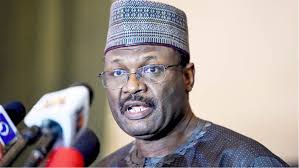Dissolution of Nairobi park will dull city's appeal, warn lobbies

Wild animals graze at the Nairobi National Park against a backdrop of the city’s new skyline /JACK OWUOR
Recent remarks by Cotu secretary general Francis Atwoli calling for the dissolution of Nairobi National Park to pave way for infrastructure development have sparked concern among conservationists, tourism stakeholders and Kenyans.
Atwoli expressed concern over the pressure the city is facing, saying Nairobi can no longer support its current population and infrastructure.
“When we were young, Nairobi had about 200,000 people. Now it hosts over 15 million people and it cannot continue like this,” he said.
To create space for expansion, Atwoli controversially suggested that land currently occupied by Nairobi National Park be repurposed for development.
“We must use the national park land around Nairobi. We must take those animals to Maasai Mara,” he proposed, adding that the space could be used to grow the city and enhance its global image.
Kenya Tourism Federation and Friends of Nairobi National Park have condemned Atwoli’s remarks.
Federation chairman Fred Odek said while urban expansion and economic growth are critical for any thriving city, dismantling an irreplaceable global treasure is neither a necessary nor visionary solution.
Odek said the park is a global rarity and national icon.
Established in 1946, Nairobi National Park is the only national park in the world located within a capital city.
“This unique status places Kenya on the global map, attracting thousands of visitors annually who are astonished to see lions, rhinos, giraffes and other wildlife set against the backdrop of a modern skyline.”
Odek said the park is not just a patch of green; it is a living museum, a source of national pride and a vital asset for tourism economy.
He said the park’s role in tourism and the economy is one of Kenya’s leading foreign exchange earners and plays a central role in that success.
“Its accessibility from the city centre makes it a premier destination for international delegates, business travellers and tourists who may not have time to visit other distant parks like Maasai Mara or Tsavo. Eliminating the park would severely diminish Nairobi’s appeal as a global conference and tourism destination, undermining ongoing efforts by the Ministry of Tourism and stakeholders to position Kenya as a hub for sustainable and eco-conscious travel.
Odek said the park also protects endangered species, supports biodiversity and offers a rare space for environmental education, research and public awareness.
He said urban planning and conservation are not mutually exclusive, adding that the park’s existence challenges stakeholders to find innovative ways to grow Nairobi sustainably.
“Other global cities like Singapore and Amsterdam have successfully integrated green spaces into urban planning. Kenya can lead by example—developing infrastructure while preserving its heritage.”
Odek said the park is not an obstacle to development; it is a cornerstone of national heritage and a beacon of sustainable coexistence.
“Let us expand our vision, not just our roads, and commit to a Nairobi City that thrives with nature, not without it.”
Kenya Tourism Federation is the apex body of the tourism private sector in Kenya, bringing together the seven key tourism trade associations.
The associations include the Kenya Association of Tour Operators, the Kenya Association of Hotel Keepers and Caterers, the Kenya Association of Travel Agents, the Kenya Association of Air Operators, the Pubs, Entertainment & Restaurants Association of Kenya and the Kenya Coast Tourism Association.
Friends of Nairobi National Park is also opposed to Atwoli’s proposal.
Nairobi National Park spans 117 square kilometres and is home to over 100 mammal species, including lion, leopard, buffalo and rhino, and more than 500 bird species.
Its unique proximity to Nairobi’s skyline makes it a global symbol of harmony between urban development and nature conservation.
Friends of the park said destroying it would have devastating consequences, such as irreversible environmental devastation.
“Nairobi National Park is a critical green lung, absorbing carbon dioxide, mitigating air pollution and regulating local climate in a city grappling with urban sprawl. Its loss would fragment ecosystems, disrupt food chains and accelerate biodiversity decline.”
The park is a stronghold for endangered species like the black rhinoceros (critically endangered, with fewer than 5,500 globally), lions, cheetahs, grey-crowned cranes and the white-backed vulture (critically endangered, facing severe population declines due to poisoning and habitat loss).
Other vulnerable species rely on the park’s unique savanna and riverine habitats.
Friends of the park said removing these habitats would push these species closer to extinction, undermining Kenya’s role in global conservation.
“Moreover, the park’s loss would degrade soil stability and water retention, increasing risks of flooding and erosion in surrounding areas.”
Friends of the park said translocating some of the species is not possible.
“Atwoli’s proposal to relocate the park’s wildlife to Maasai Mara is logistically and ecologically unviable. Translocating thousands of animals, including large mammals like rhinos (weighing up to 2,300 kg) and smaller, sensitive species like the serval cat, and numerous reptiles and amphibians poses immense challenges.”
“Smaller species are often overlooked in translocation plans but are critical to ecosystem balance, such as insectivorous birds and small mammals that control pest populations.”
They said capture and transport stress can lead to high mortality rates, particularly for species with specific dietary or habitat needs.
“Maasai Mara, already at carrying capacity for many species, lacks the diverse microhabitats of Nairobi National Park, risking competition and population crashes.”









